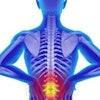VIENNA - Real-time continuous ultrasound elastography produced good results in identifying malignant breast lesions and helping divert some patients with suspicious masses from biopsy, according to a series of presentations today at the European Congress of Radiology (ECR).
Ultrasound elastography measures the differences in strain characteristics between malignant and benign tissue as it is compressed, with malignant lesions typically appearing harder and slightly larger on elastograms compared to conventional B-mode ultrasound. The technique is experiencing renewed interest due to the introduction of new real-time techniques that can produce elastograms concurrently with conventional ultrasound.
In scientific sessions at ECR on Saturday, researchers from around the world discussed their experiences with real-time elastography. Most concluded that the technique demonstrated good accuracy compared to B-mode ultrasound, seemed to work best with smaller lesions, and could help characterize questionable lesions, thus helping women avoid biopsy.
In an Italian study, researchers from eight institutions studied 784 women with a mean age of 52.5 years. A total of 874 lesions were detected, with 614 of these proving to be benign and 260 malignant, according to presenter Martina Locatelli, Ph.D., of General Hospital in Gorizia.
One goal of the study was to develop a new way to classify lesions based on a widely used technique described by Dr. Ei Ueno et al (Radiology, February 16, 2006, Vol. 239, pp. 341-350), but that also included criteria for small lesions and complicated cysts with both soft and stiff characteristics, which the group felt weren't adequately covered by the Ueno scheme. The group also wanted to develop methods to make real-time elastography more reproducible, with less variation between operators.
The group measured the impact of different breast tissue characteristics, such as echogenicity, breast thickness, and lesion depth. They found that one of the major factors affecting elastography's accuracy was lesion size, with the technique performing best in lesions smaller than 6 mm.
A particular focus of the group's work were lesions classified as BI-RADS 3, which often undergo biopsy and short-term follow-up, Locatelli said. The group found that their technique had a negative predictive value of 96% for BI-RADS 3 lesions with a mixed pattern of soft and stiff characteristics. This increased to 100% for lesions smaller than 6 mm.
"In these cases, we can avoid biopsy and we can also delay the next follow-up to one year," Locatelli said.
The group also succeeded in making the technique reproducible, scoring ratings of 90% for interobserver reproducibility and 93% for intraobserver reproducibility.
In another study, Dr. Anke Thomas of Charité Hospital in Berlin presented her group's results in comparing real-time elastography's sensitivity and specificity to B-mode ultrasound. The group studied a patient population of 300 women (mean age 51 years), 168 of whom had benign lesions while 132 had malignancies. They used an EUB 8500 scanner with linear-array 6-13-MHz probe (Hitachi Medical Systems, Tokyo).
The researchers matched the Ueno five-point elastography scoring system to the BI-RADS scale. As with Locatelli's group, the Charité team found that elastography excelled in the BI-RADS 3 category, which is a difficult classification to manage as lesions classified as BI-RADS 1 and 2 usually are not biopsied, while lesions classified as BI-RADS 4 and 5 nearly always receive additional workup.
The technology produced specificity of 92% for BI-RADS 3 lesions, compared to 82% for B-mode ultrasound. Elastography also performed better in characterizing lesions with lipomatous involution, scoring 80% sensitivity compared to 69% sensitivity for B-mode imaging. The Charité group had interobserver reproducibility of 86%, comparable to the Italian study.
A study from Turkish researchers echoed both the German and Italian findings. Dr. Ayşegül Özdemir of Gazi University Hospital in Ankara presented results of a study of 310 patients, in whom 401 lesions were found. Of these, 20 were cystic and 381 were solid. The group used a Hitachi EUB 8500 scanner for elastography, with B-mode ultrasound conducted using a Logiq 9 scanner (GE Healthcare, Chalfont St. Giles, U.K.).
They found that elastography had lower sensitivity than B-mode ultrasound and mammography, 82% for elastography versus 100% for the latter two modalities. But elastography's specificity was higher, 91% versus 77%, indicating the technique's role in ruling out suspicious lesions that turn out to be benign.
Like the other groups, the Turkish team found that elastography's diagnostic performance worsened with bigger lesions, particularly those larger than 30 mm. There was no difference in the technique's performance regardless of the depth of the lesion or in the density of breast tissue, Özdemir said.
"Elastosonography can increase the specificity, (positive predictive value), and accuracy when combined with standard breast imaging modalities, namely, mammography, grayscale ultrasound, and color Doppler," she said.
Finally, a group from Korea presented research on its effort to develop a computer-aided classification system for elastography images. Dr. Woo Kyung Moon of Seoul National University said his group examined 86 patients, in whom there were 100 solid breast masses (60 benign, 40 malignant).
The group used a continuous real-time scanning technique, but pulled every one of eight images from each scan for computer analysis. The computer algorithm analyzed three primary features of lesion strain -- contour distance, shift distance, and area distance -- and one feature of lesion shape, solidity. The algorithm produced sensitivity of 85%, specificity of 88%, positive predictive value of 83%, and negative predictive value of 90%.
By Brian Casey
AuntMinnie.com staff writer
March 10, 2007
Related Reading
AuntMinnieTV: Ultrasound elastography may help women avoid breast biopsy, January 26, 2007
US elasticity testing could cut breast biopsies by half, November 28, 2006
Streaming US, elastography US give clearer picture of breast lesions, June 16, 2006
Auto breast US handily spots lesions in early study, January 13, 2006
US elastography shows promise as mammography adjunct, March 5, 2005
Copyright © 2007 AuntMinnie.com



















